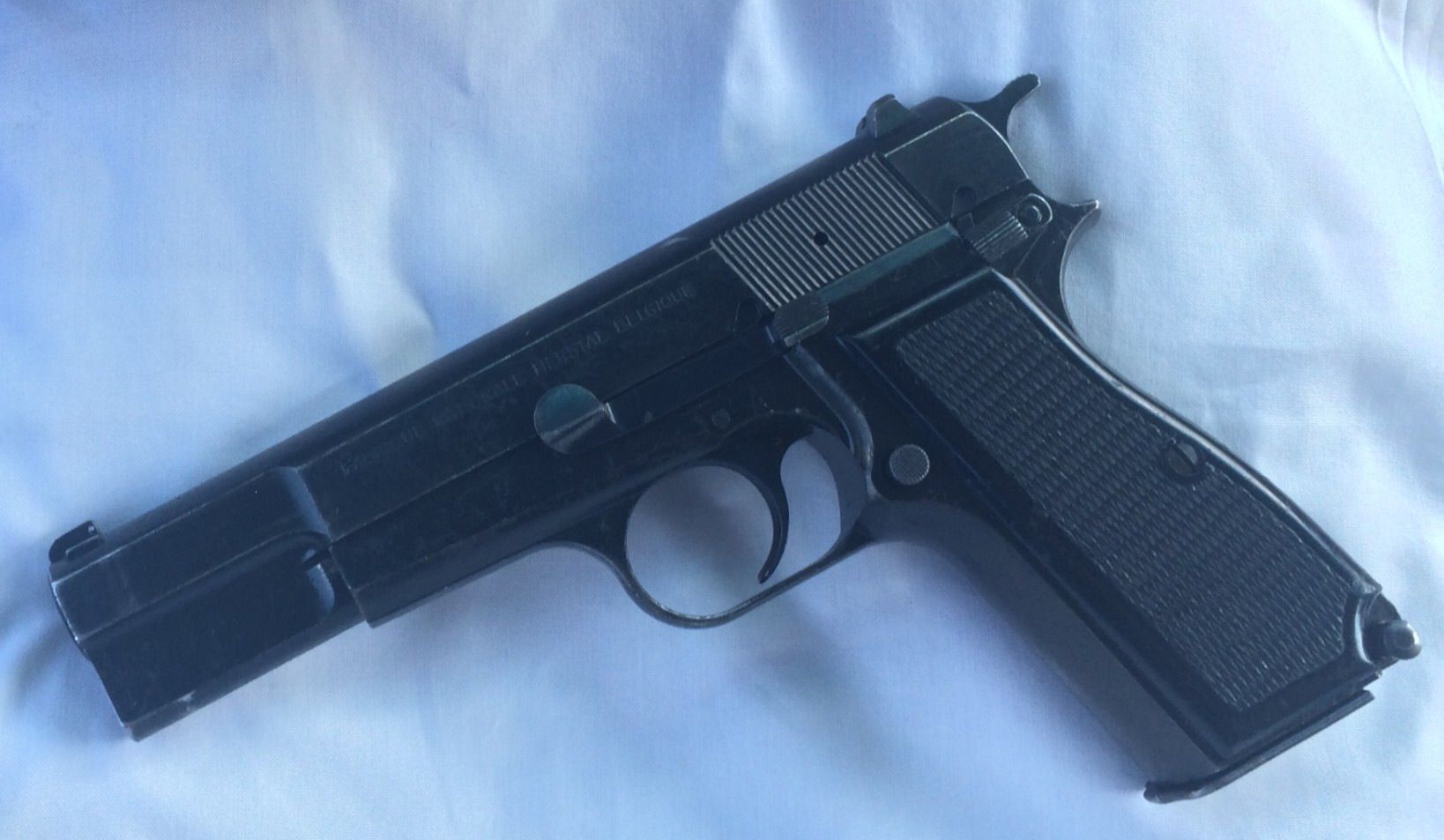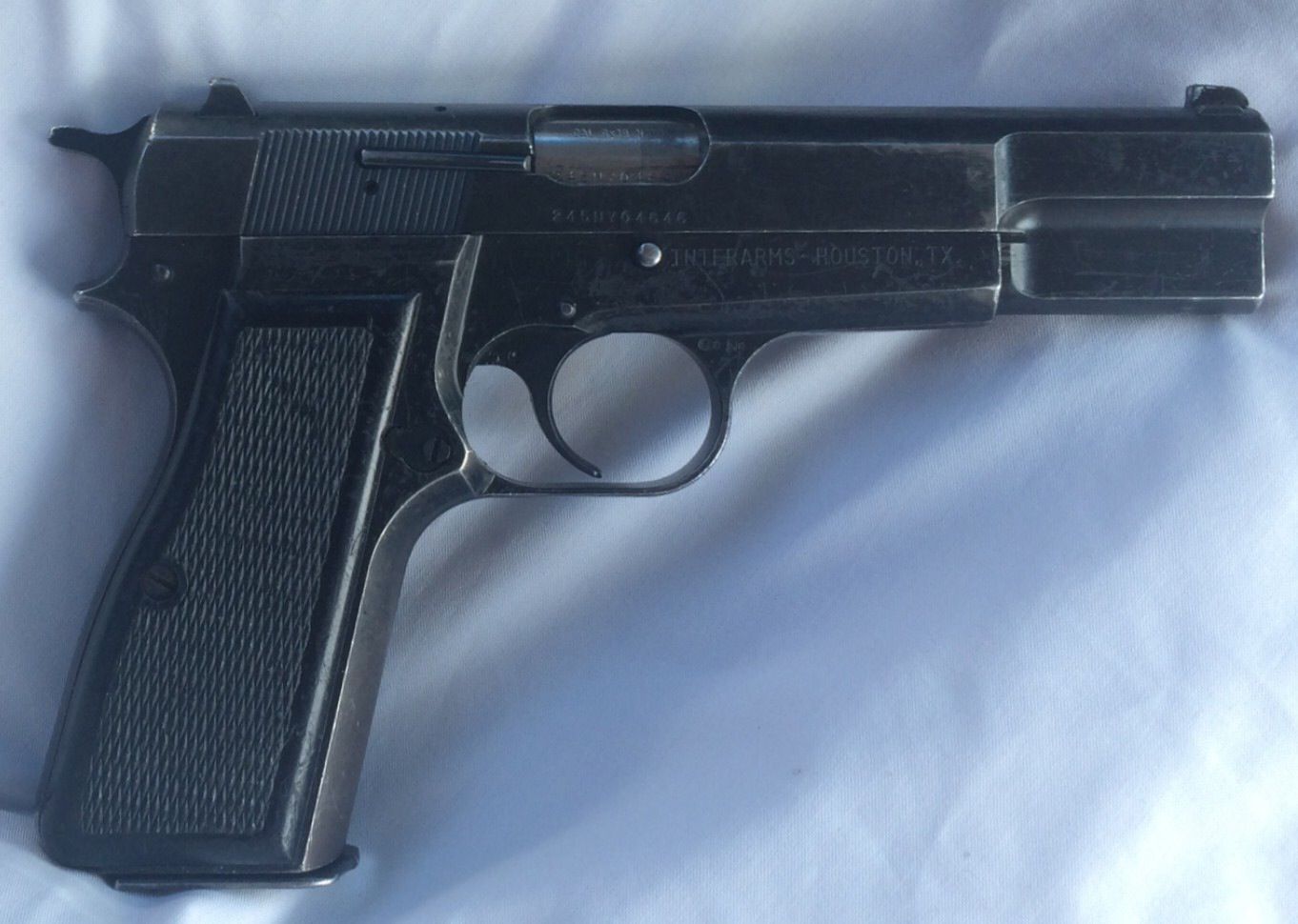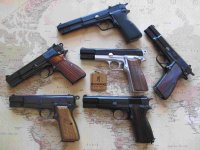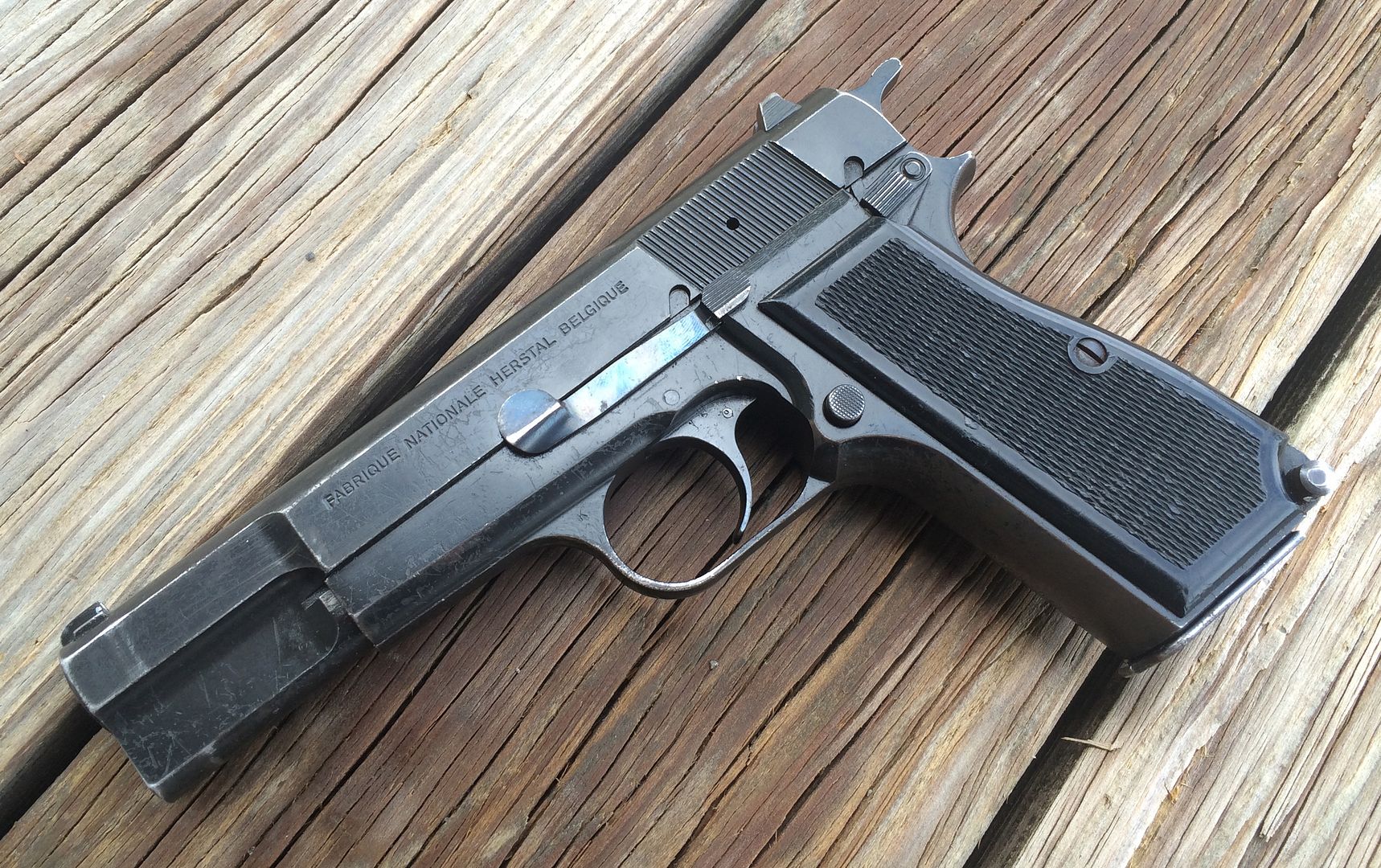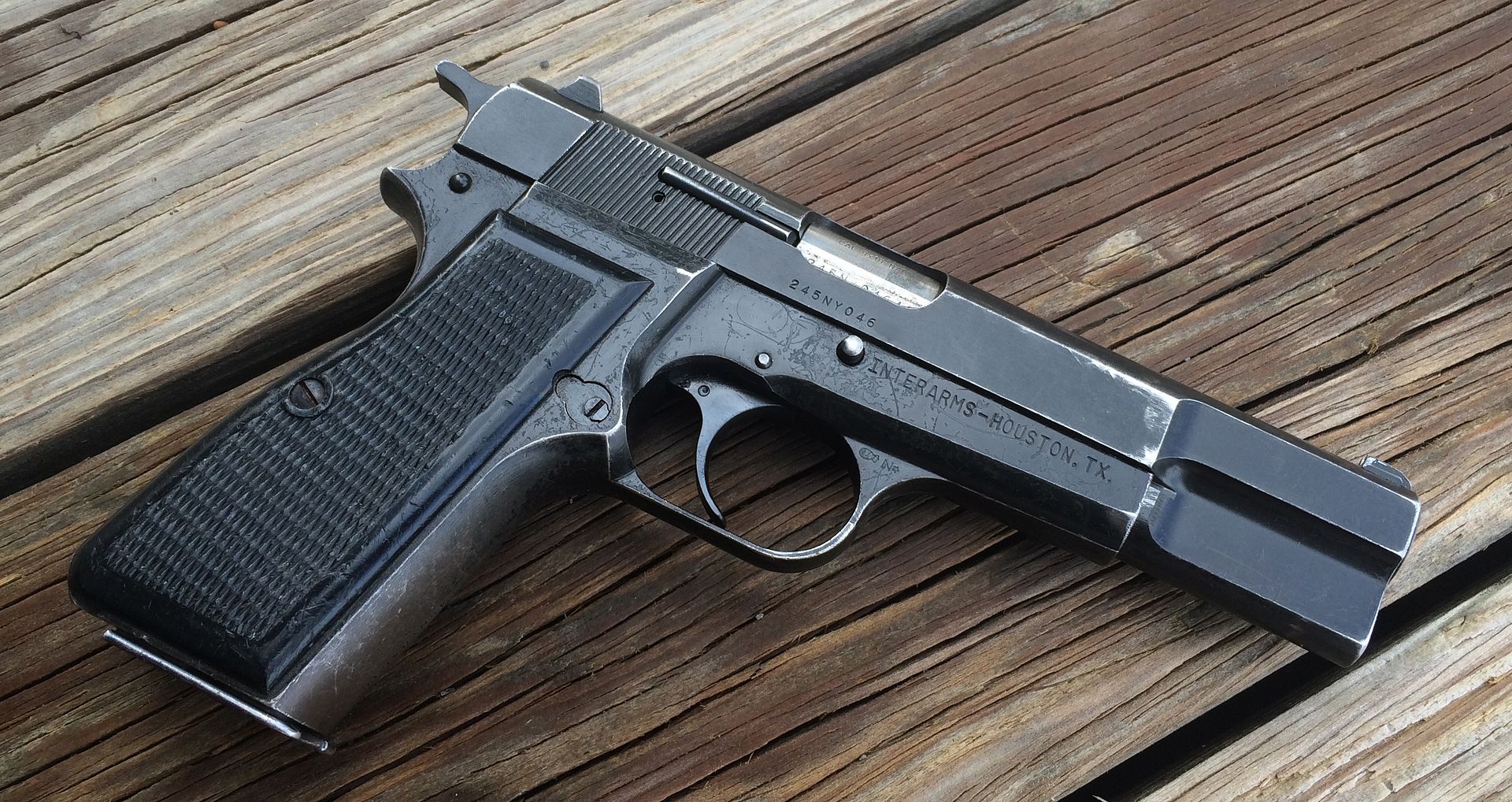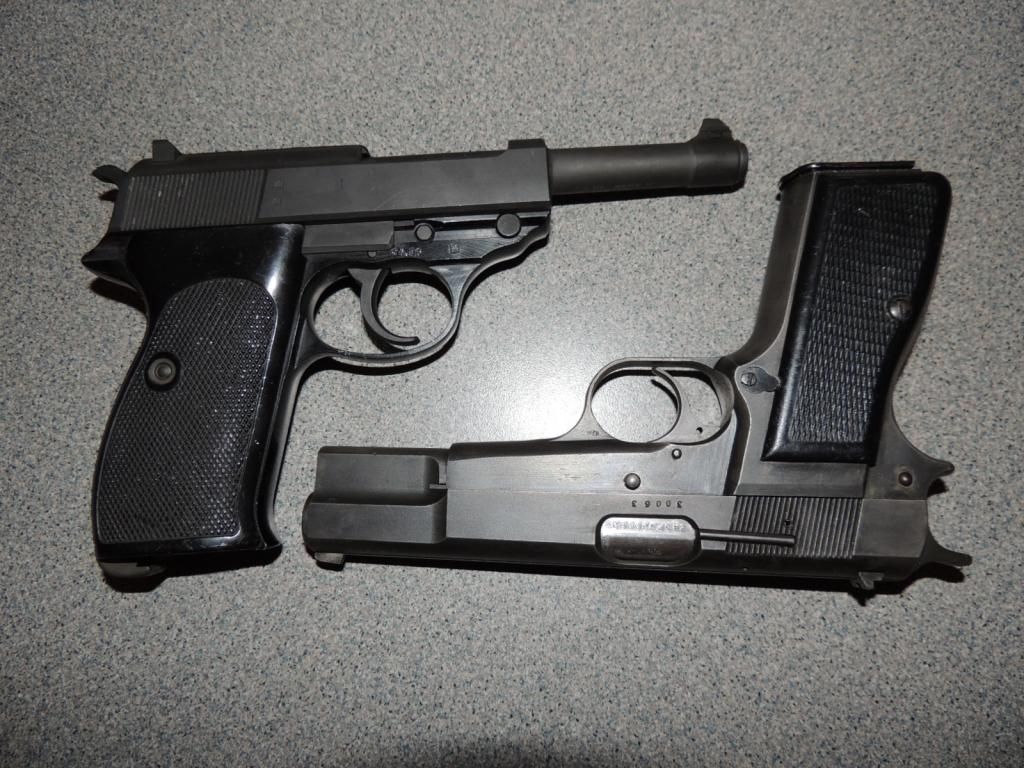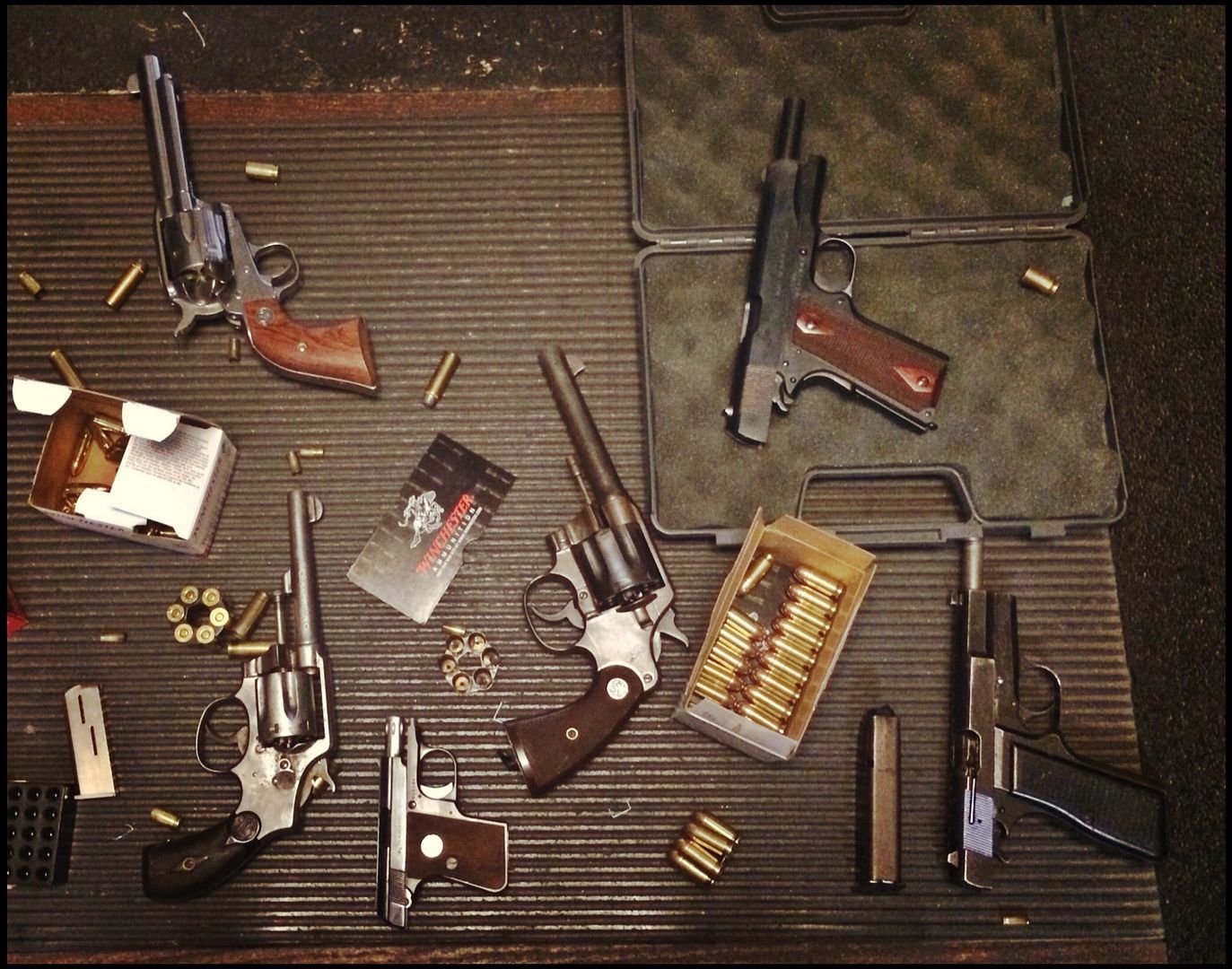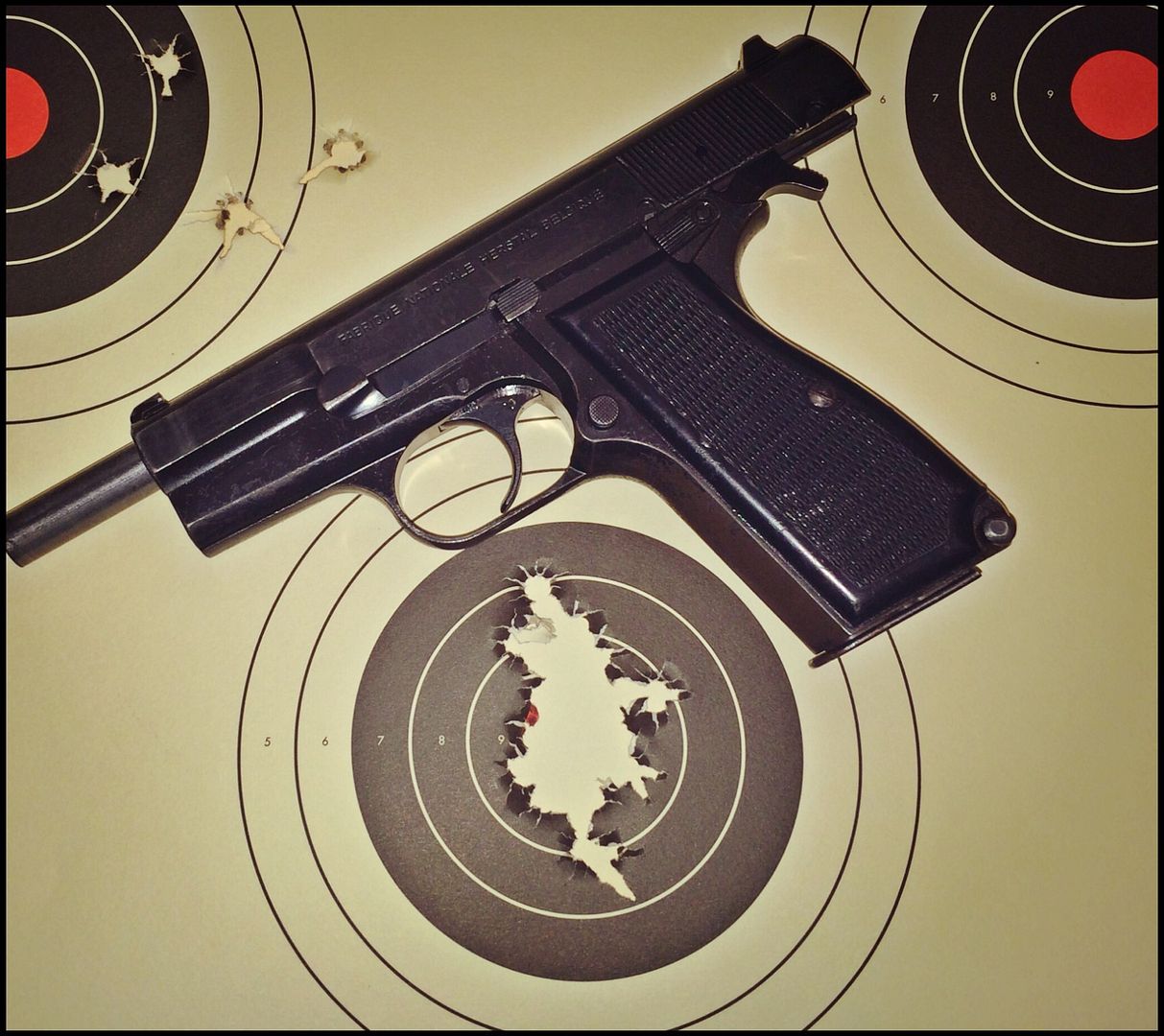John M. Browning passed away on November 26. 1926. His last patent for the gun that became the BHP or GP shows an entirely different gun than the production version, including striker firing and a removable breech block somewhat like the Savage pistols. (What looks in some pictures like a stubby hammer is the safety, which slides up and down.)
Since Saive and Browning worked together, it is not really possible to say which man was responsible for what portion of the BHP design. But Browning did not spend full time on the pistol; he was working on his O/U shotgun design when he died.
The 1923 version, which eliminated the striker in favor of a hammer, still retained the detachable breech block. The 1928 version, produced after Browning's death, was essentially like the BHP we know. It is almost certainly a Saive design, but built on a base of Browning's ideas.
The simple fact is that all guns (or any other successful piece of machinery), will undergo changes, major or minor, during the transition from a designer's first vision to production status and even after. When more than one person is involved in making those changes, it is interesting, but rather pointless, to speculate about which person was responsible for what portion of the final design.
Jim
